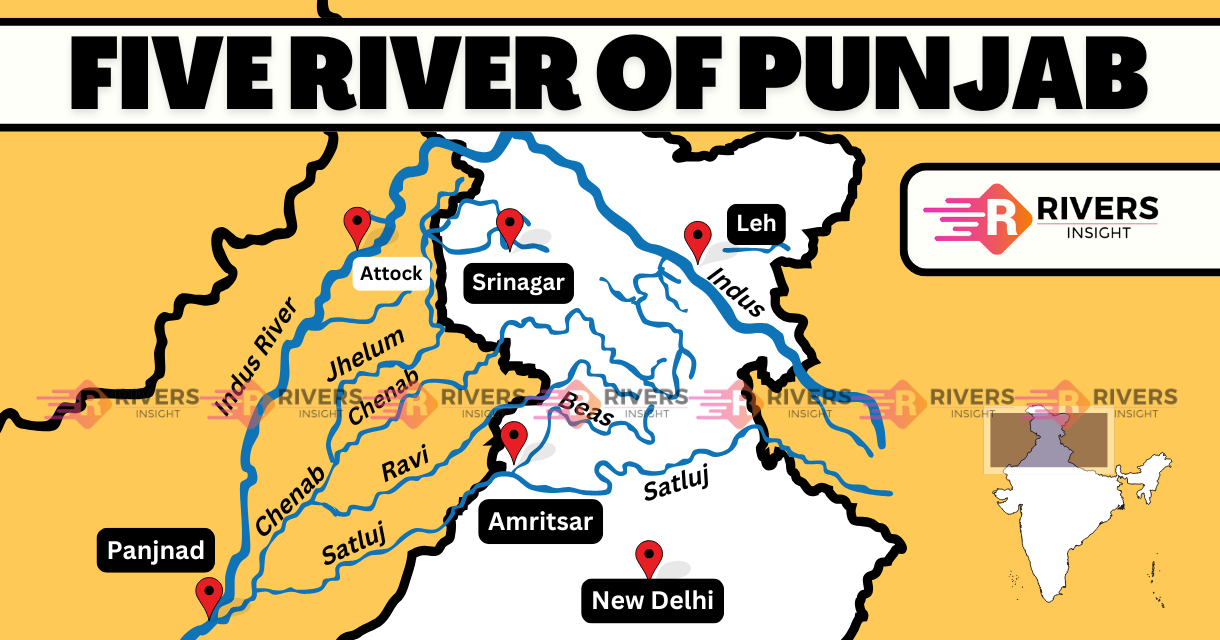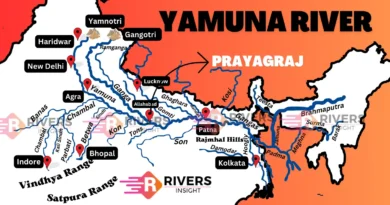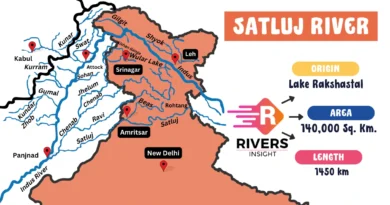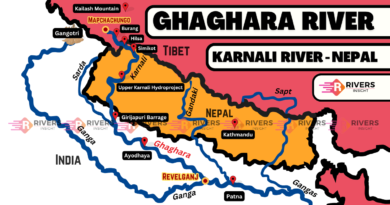Five Rivers of Punjab: Names, Map & Facts
Punjab is known as the “Land of Five Rivers” because it is home to the five rivers of Punjab: Jhelum, Chenab, Ravi, Beas, and Sutlej. These rivers have played a significant role in shaping the region’s geography, agriculture, and culture. The name “Punjab” comes from the Persian words Panj, meaning five, and Aab, meaning water. This article will give you an overview of each river and interesting facts about them.
Table of Contents
The Five Rivers of Punjab: An Overview
- Jhelum River
- Chenab River
- Ravi River
- Beas River
- Sutlej River
These rivers originate from the mighty Himalayas and flow through both India and Pakistan, nourishing the lands and people of Punjab. Let’s get some important facts and an overview of each river.
1. Jhelum River
The Jhelum River stretches over 725 kilometers, originating from Vernag in Jammu and Kashmir. It plays a significant role in the region’s water system, draining an area of 15,856 km². The river has 24 tributaries that feed into it, enriching the water resources of the region. Eventually, the Jhelum flows into the Chenab River, contributing to the larger water systems in Pakistan and India.
2. Chenab River
The Chenab River originates from the Bara Lacha Pass, formed by the confluence of the Chandra and Bhaga rivers at Tandi. It flows for approximately 960 kilometers, covering a drainage area of 61,000 square kilometers. The river passes through Jammu and Kashmir in India before entering Pakistan. Key dams and hydroelectric plants like the Salal Dam, Baglihar Dam, Dul Hasti Hydroelectric Plant, and Pakal Dul Dam harness the river’s water for irrigation and power generation.
3. Ravi River
The Ravi River originates in the Lahul range of hills in the Himalayas and flows for a total length of 720 kilometers. The river covers an area of around 14,442 square kilometers. Major tributaries include the Budhil, Nai (Dhona), Seul, Seva, and Tant Gari rivers. Notable hydroelectric projects along the river include the Thein Dam (Ranjit Sagar Dam) and the Chamera Dam, which support irrigation and power generation.
4. Beas River
The Beas River, also referred to as Bipasha in ancient texts, originates from the Rohtang Pass in the Himalayas. The river stretches over a length of 470 kilometers. The Beas flows southeast and merges with the Sutlej River at Harike Pata in Punjab. Important hydroelectric projects along the Beas include the Pong Dam, Pandoh Dam, and Largi Dam, which play key roles in water storage, irrigation, and power generation in the region.
5. Sutlej River
The Satluj River originates from Tibet near Lake Rakshastal and flows a distance of 1,450 kilometers. It is one of the longest rivers in the region. Key tributaries of the Satluj include the Beas, Spiti, and Rupi rivers. Notable structures on the Satluj River include the Bhakra Dam and Nangal Dam, which are vital for hydroelectric power generation, irrigation, and flood control in northern India.
Significance of the Five Rivers of Punjab
- Agriculture: The rivers provide essential irrigation, supporting Punjab’s fertile agricultural land.
- Cultural Importance: These rivers are central to the region’s cultural and religious traditions.
- Economic Support: The rivers enable trade and industries, boosting the region’s economy.
- Hydroelectric Power: Dams on these rivers generate hydroelectricity for the region.
- Ecological Value: The rivers sustain biodiversity, supporting wildlife and the environment.
- Water Supply: They are the primary source of water for drinking, domestic use, and industries.
We would love to hear your thoughts on the Five Rivers of Punjab! For more in-depth information, don’t forget to explore our detailed articles on each river. Feel free to share your feedback or ask any questions in the comments below.




